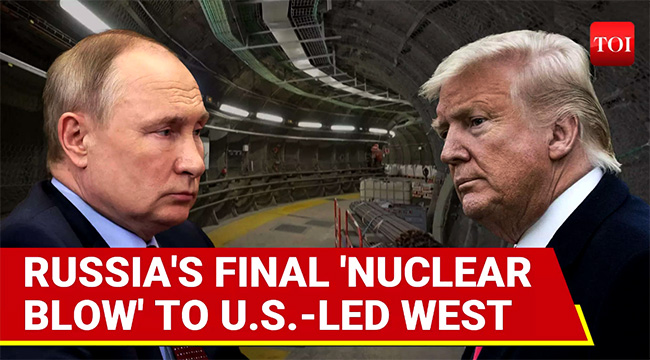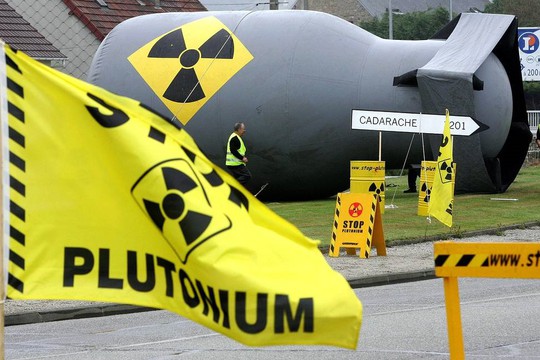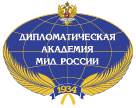Photo: Reuters
Russian President Vladimir Putin has signed into law the termination of the intergovernmental agreement with the United States regarding the disposition of surplus weapons-grade plutonium, TASS reports.
Originally established in 2000 and ratified in 2011, the treaty outlined plans for both nations to dispose of 34 tons of plutonium each -material deemed excessive for military use. The document was suspended in 2016 by a presidential decree and a federal law.
In addition to withdrawing from the main agreement, Russia has also denounced all associated protocols. These supplementary documents previously governed funding mechanisms, civil liability for potential damages, and arrangements for disposing of the plutonium through irradiation in nuclear reactors.
Previously The State Duma adopted a bill denouncing the Agreement between the Government of the United States of America and the Government of the Russian Federation Concerning the Management and Disposition of Plutonium Designated as No Longer Required for Defense Purposes and Related Cooperation and a number of protocols to this Agreement.
The bill submitted to the State Duma sets out pre-conditions for the agreement to be resumed. These include reduction of US military infrastructure and troops in countries that joined NATO after 1 September 2000 and lifting of all US sanctions against Russia – imposed after Russia’s annexation of Ukraine's southern Crimea peninsula in 2014 – and “compensation for the damage they have caused”.
As emphasized the Deputy Minister of Foreign Affairs of the Russian Federation Sergey Ryabkov, the reasons for suspending the Agreement were “a fundamental change in circumstances: the imposition of sanctions by the United States against the Russian Federation, the adoption of a law on providing support to Ukraine that allows interference in our country's internal affairs, NATO's expansion to the East, the expansion of the US military presence in Eastern European countries, and, most importantly in relation to this Agreement, the US intention to change the plutonium disposition procedure, as it was prescribed in the Agreement, without obtaining the consent of the Russian Federation.”
Sergey Ryabkov recalled that Russia had announced conditions for resuming the Agreement. “At the current time, none of these conditions can be met, given that the situation has radically changed. And in this situation, the process of terminating cooperation with the USA under the Agreement, even from a formal point of view, is just a result of such actions,” he explained. According to the Deputy Foreign Minister, maintaining any further obligations regarding plutonium, which is the subject of the Agreement, is considered inappropriate.

The two countries were each required to dispose of 34 tonnes of weapons grade plutonium under a weapons reduction agreement signed in June 2000. They reconfirmed the deal in 2010, but President Barack Obama's FY2017 budget submission proposes a "dilution and disposal" approach as enabling the material to be disposed of sooner, at lower cost and with lower technical risks than conversion to mixed-oxide (MOX) fuel, ‘World Nuclear News’ writes.
Obama has proposed halting construction of a facility in South Carolina to downblend the plutonium into MOX fuel for use in commercial reactors. That form of use for the material was specified in a 2010 protocol to the agreement as the sole disposal option for the USA. Russia had agreed to dispose of the material in fast reactors.
Putin said the USA was failing to meet its obligations to destroy plutonium by instead permitting a reprocessing method that allows plutonium to be extracted and used again in nuclear weapons.
In May 2015, Obama drew a line under the completed Megatons to Megawatts program by terminating a state of national emergency that had been declared in 2000 to help to ensure that payments to Russia under the 1993 agreement to downblend surplus military high-enriched uranium could not be derailed by unrelated legal actions.
In a letter to the US Congress, Obama said then that, with the completion of the program, the order was no longer needed.
In 1993, the US and Russian governments signed an agreement for the purchase over a 20-year period of 500 tonnes of Russian 'surplus' high-enriched uranium (HEU) from nuclear disarmament and military stockpiles. These were to be bought by the USA for use as fuel in civil nuclear reactors. Under the deal, the USA transferred to Russia a similar quantity of natural uranium to that used to downblend the HEU.
Also known as the HEU Agreement, the Megatons to Megawatts program was implemented through a 1994 contract between the US Enrichment Corporation and Techsnabexport (Tenex), which acted as executive agents for the US and Russian governments. After the HEU Agreement was signed, the US Enrichment Corporation was later privatized, becoming USEC Inc. Since 2000 the program has been under the US National Nuclear Security Administration.
In August 2013, the final shipment of LEU from Russian TVEL's JSC Electrochemical Plant marked the completion of Russia's commitments under the Megatons to Megawatts program. The US-Russian agreement to downblend weapons-grade uranium expired at the end of that year.
read more in our Telegram-channel https://t.me/The_International_Affairs

 11:39 28.10.2025 •
11:39 28.10.2025 •























